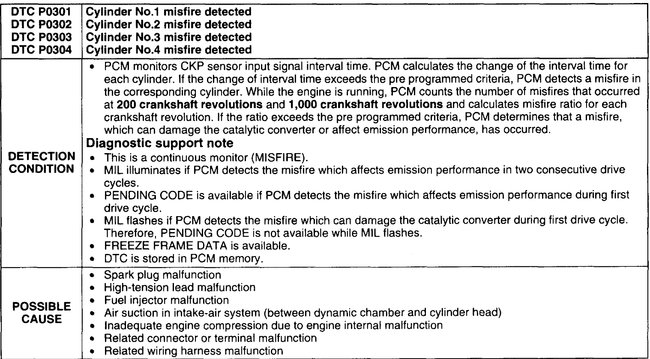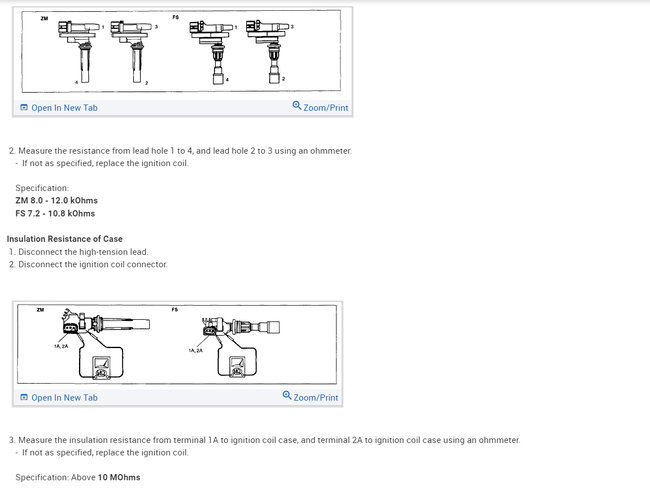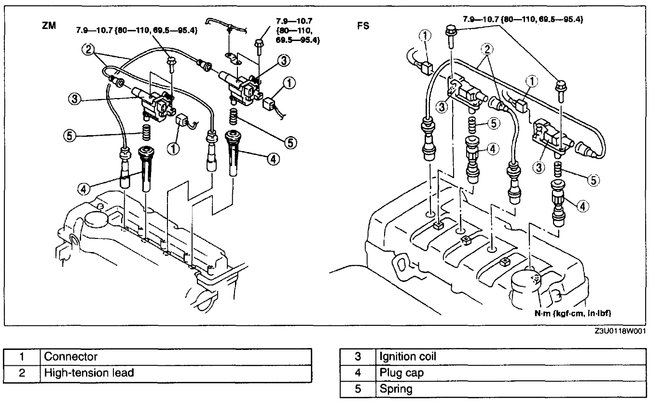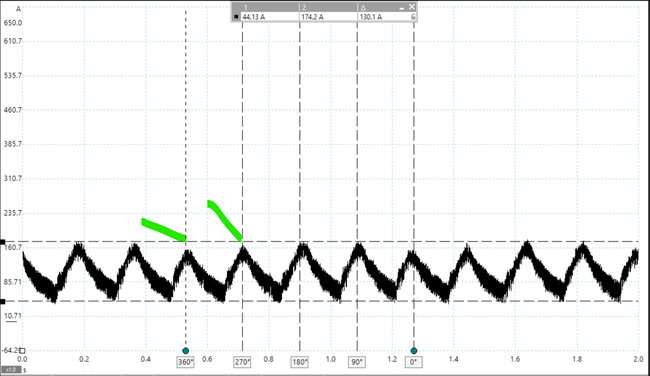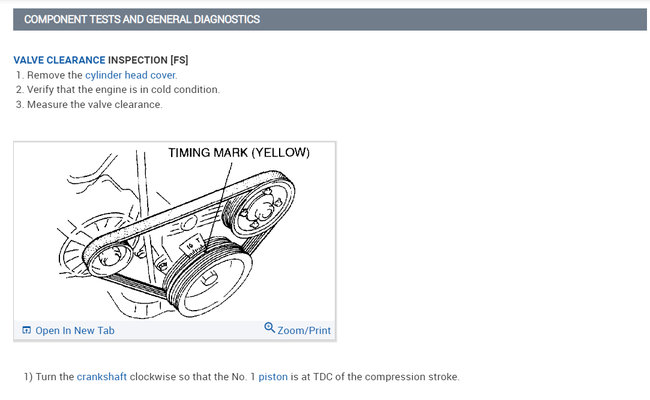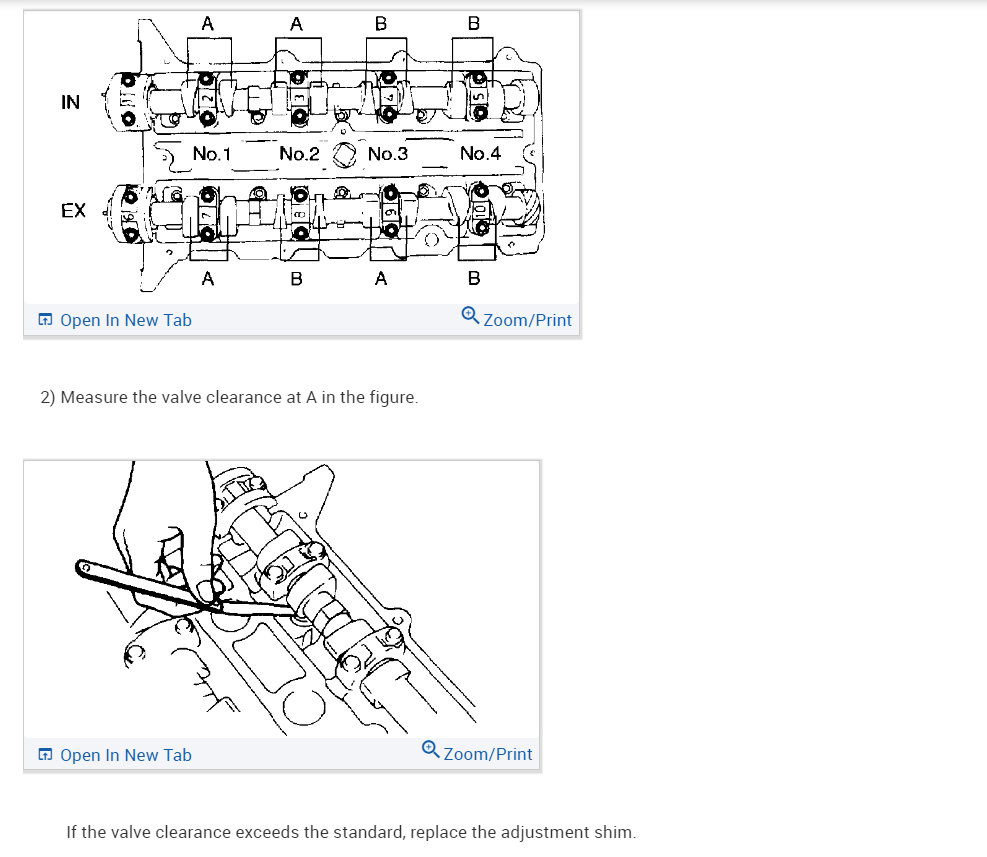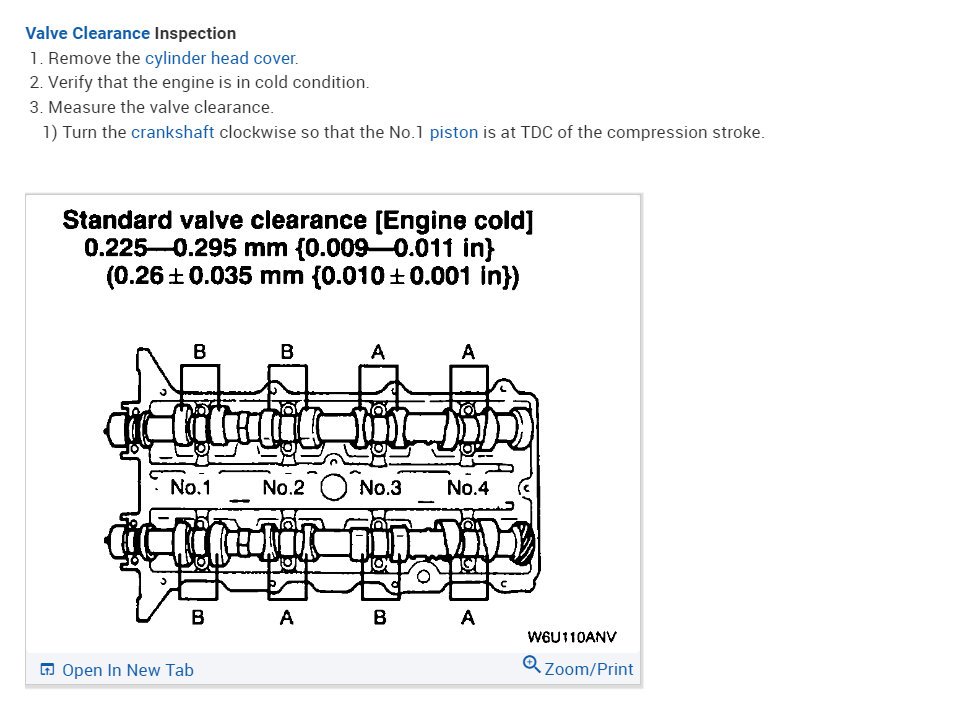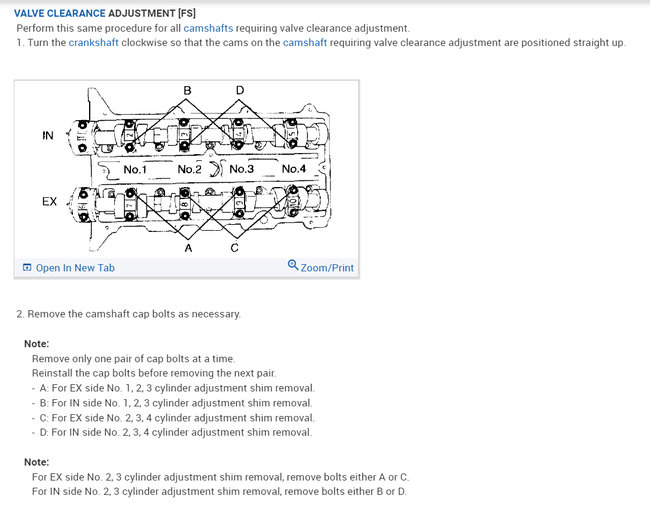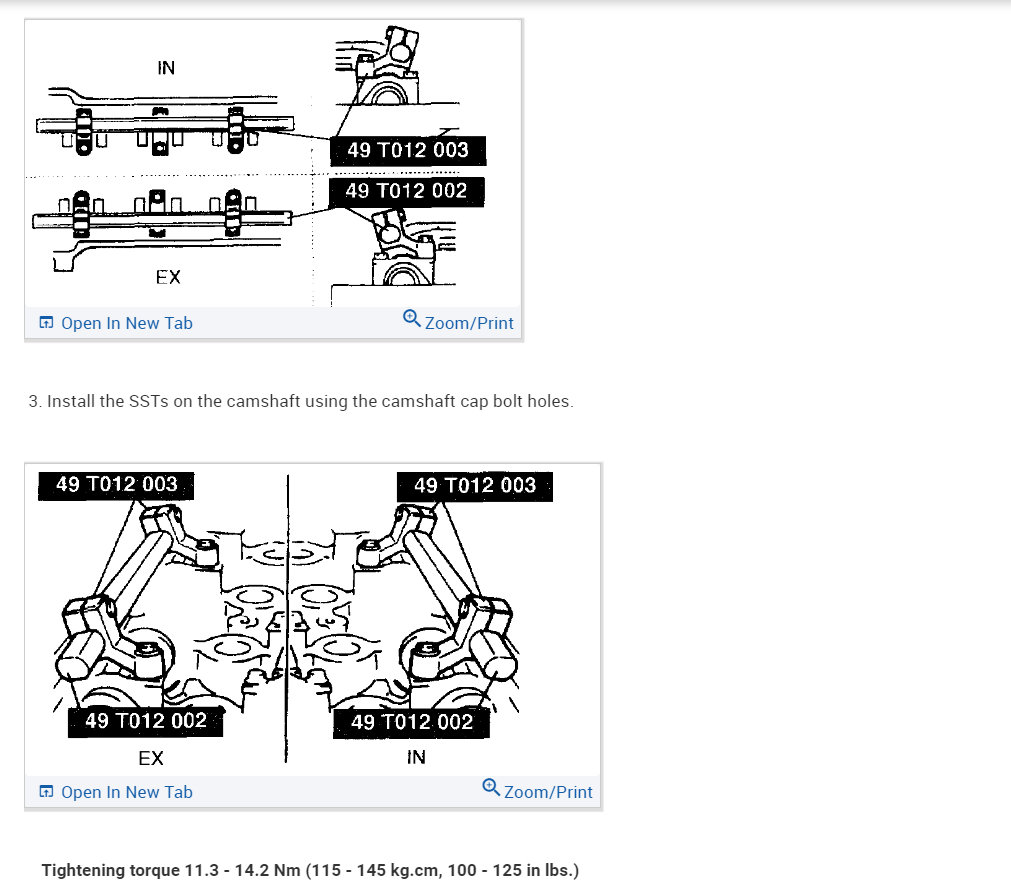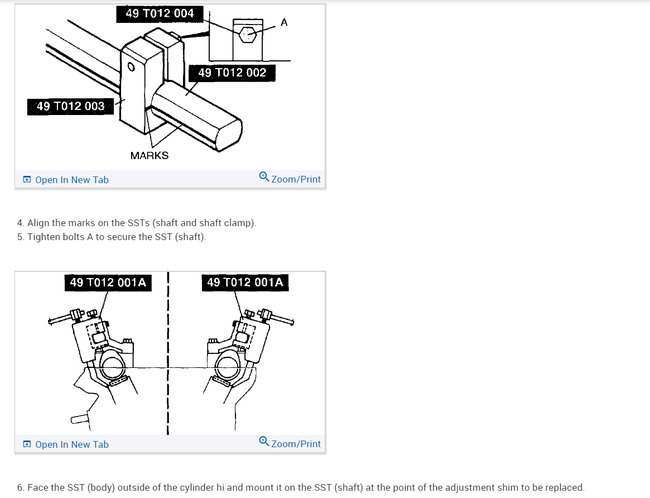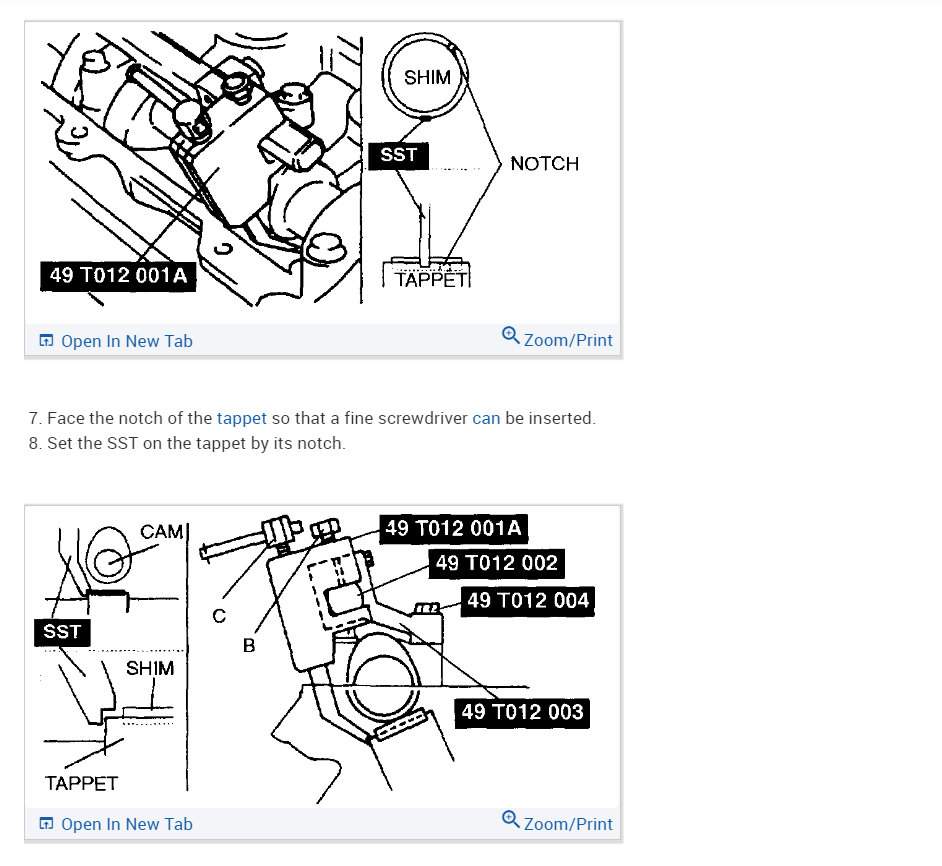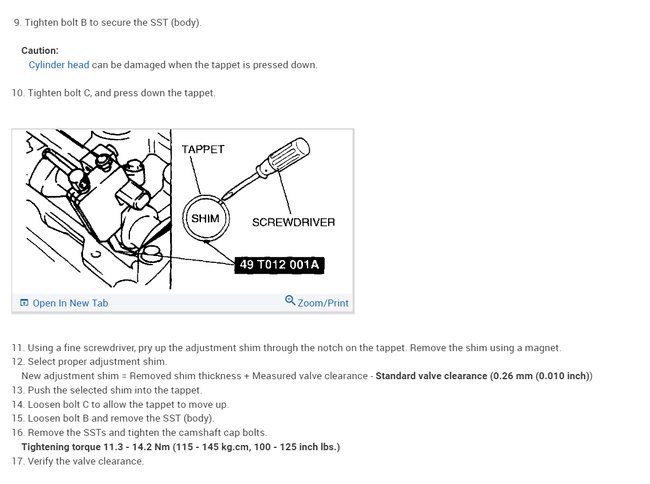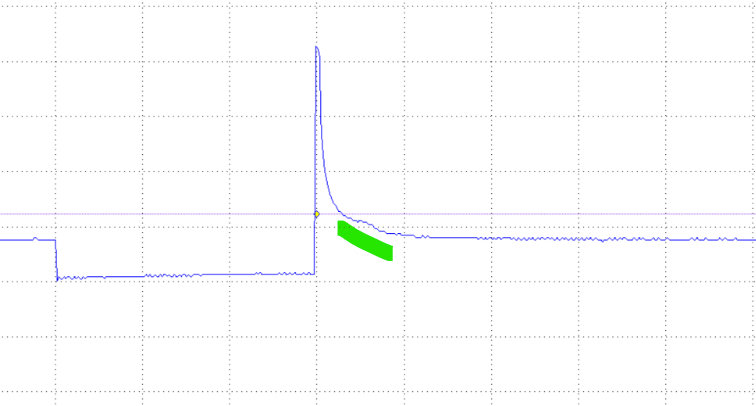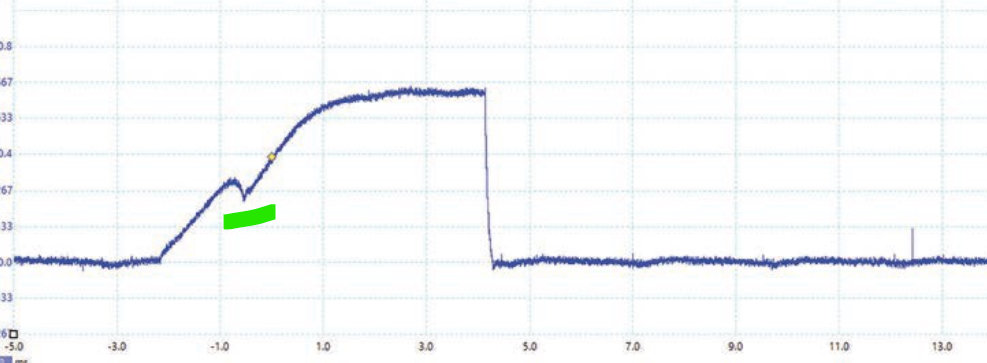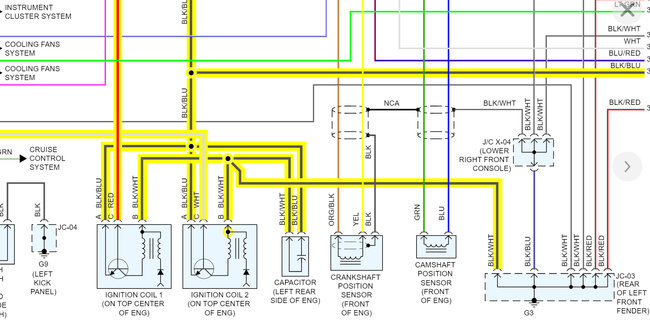The info on the valve lash adjustment for these actually require a shim to be put in, each camshaft cap needs to be removed one at a time to put a different size shim in. I've actually never seen a design like this. Most valve adjustment I've done was on Hondas where there's just a lock nut and screw to adjust. This looks pretty complicated. It requires special tools that need to be bolted on to hold the camshafts. I'll put the diagrams and information below. But if you have a relative compression test with your scope, you'll be able to see each cylinder's compression hump and if any cylinders are low indicating a mechanical issue.
(First diagram) This is a relative compression test I did on a 06 Honda CRV. You can see the two cylinders that were low. One was a lot worse. This turned out to be a bad head gasket, but I had done a valve adjustment before, and it didn't improve. I used a high amperage amp clamp (600A) to grab this waveform, but you can actually do it right on the battery too. It will just need to be inverted. From the battery it's just measuring voltage drop from the Starter motor versus getting an amperage reading where each hump is the actual compression stroke.
But I think if the valves were too tight, they would actually be staying open instead of sealing the cylinder and you would have popping into the intake or backfiring out the exhaust.
I'd think if you had a completely dead cylinder it would have to be a coil, injector or wiring issue. You could scope the injector too and see if there's a pintle hump just after its inductive voltage spike or with a current amp clamp. I'm sure you probably already know this stuff. We just don't get a lot of people on here that use a scope.
But let me know what you find, I'm really curious what turns up.
Images (Click to make bigger)
Tuesday, July 19th, 2022 AT 6:56 PM
